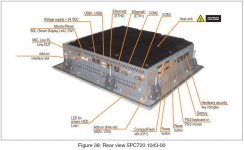I am currently setting up a B&R APC620 which will eventually have a AP920 panel as well. I have used the X20 series "PLC" units previously & with a little hard work they are not a bad unit. My problem is this.... According to the manual for the APC the "Hardware security key" is an option to protect your software from being duplicated. We don't care about this as the machine is a one off custom built for the client who will get the source code at the end of the build.
When I generate the CF card for the PC using Automation Studio and then boot the PC off this card, it appears to start loading but comes up with an message "Security Key not connected"
1. is this the Dallas DS1425 security key mentioned in the manuals (as optional)?
2. How do we disable this if it is optional?
3. If this is looking for another security key (possibly automation run time) what is this & where do I get information on it?
Previously with the X20 CPU's we have simply created the CF card, pulgged it into the CPU and turned on the power and baring any software bugs all was up & running.
???
When I generate the CF card for the PC using Automation Studio and then boot the PC off this card, it appears to start loading but comes up with an message "Security Key not connected"
1. is this the Dallas DS1425 security key mentioned in the manuals (as optional)?
2. How do we disable this if it is optional?
3. If this is looking for another security key (possibly automation run time) what is this & where do I get information on it?
Previously with the X20 CPU's we have simply created the CF card, pulgged it into the CPU and turned on the power and baring any software bugs all was up & running.
???








